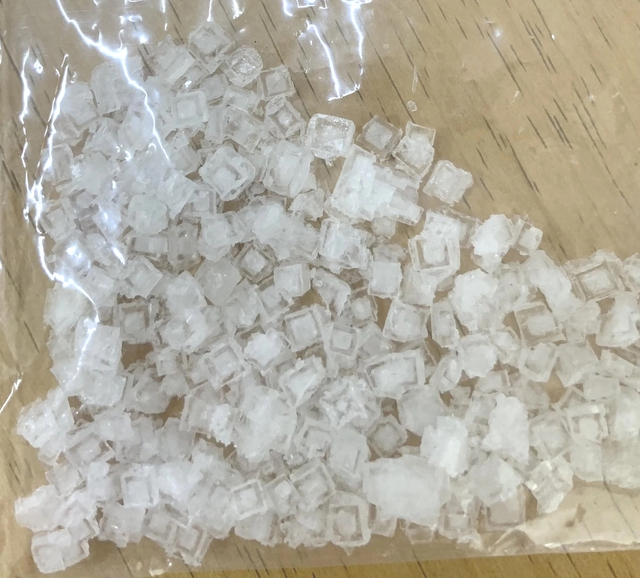Salt is an essential seasoning in every household. Information about salt being contaminated with microplastics has caused concern and confusion among consumers. This has led to the spread of unscientific methods for removing microplastics from salt online.
Is there microplastic in our salt?
Dr. Vu Thi Tan, a lecturer in Inorganic Chemistry at Hanoi University of Science and Technology, shares: “In fact, international studies have shown that up to 90% of salt samples collected from 32 out of 37 global brands were found to contain microplastics.”
As a lecturer in salt production technology for engineering students at Hanoi University of Science and Technology, Dr. Tan provides the following professional insights to the community.
First, we must acknowledge that salt contaminated with microplastics is a real issue, and it is not limited to a specific production method. Most types of salt on the market today, including sun-dried sea salt, manually sun-dried sand salt, and even salt exported to demanding markets like Japan, are at risk of microplastic contamination.
The reason for this is that current salt standards (both domestic and international) do not evaluate or limit microplastic content. The standards typically include parameters such as NaCl content, moisture, insoluble impurities, and heavy metals (Hg, As, Cd, Pb, Cu, etc.).
Microplastics are not yet included in the list of mandatory testing parameters, so even “clean,” “handmade,” or “export” salt may contain microplastics.

Salt crystallized by Dr. Tan’s students from sea salt in Giao Thuy and Hai Hau districts, Nam Dinh province
Image source: Dr. Vu Thi Tan
Beware of unverified tips circulating online!
Given this reality, some online sources claim that using manually sun-dried sea salt can help avoid microplastics. Others suggest recrystallizing salt at home or filtering salt with paper or fabric filters to remove microplastics.
Dr. Tan advises extreme caution regarding these “DIY microplastic filtration” methods that involve dissolving salt in water and filtering it through fabric or paper filters before recrystallization. According to Dr. Tan, this approach lacks scientific basis.
Microplastics are extremely small, typically measuring 5-10 micrometers, and cannot be trapped by ordinary fabric or paper filters purchased online. To effectively remove microplastics, specialized filters such as microfilters or nanofilters are required. These filters are designed to capture particles at an ultra-fine level and need to be coupled with a vacuum pump system as the water cannot pass through these membranes on its own. Recrystallizing salt at home will not eliminate microplastics as they can persist through the recrystallization process.

Online tip on filtering microplastics from salt, which lacks scientific basis
Image source: Screen capture
According to Dr. Tan, there are currently no prominent solutions to address the issue of salt contaminated with microplastics. However, since the daily salt intake for humans is typically around 2-5 grams, the amount of microplastics consumed is considered negligible, as assessed by some international organizations.
Salt contamination with microplastics is a global issue that requires the attention of scientific and regulatory bodies to establish specific guidelines and solutions. It is important for consumers to stay informed and understand the true nature of the problem to avoid unnecessary panic.

































